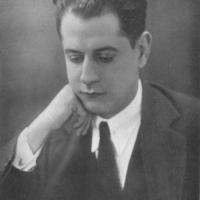
Minor Pieces are an Even Trade... Right?
[Ed: This is the last article of our switch-around week. Each of this week's daily columns (beginning last Sunday) was actually written by one of our other columnists. If you have a guess as to who wrote what, send it to me (dpruess). From entries with all 6 authors correctly identified, I will randomly pick a member to receive a chess.com shirt, and one to receive a 3-month membership upgrade.]
[Ed: This article was actually authored by GMs Magesh and Arun]
What is it that makes a great chess player? We can take several qualities from several champions and make a complete list of the attributes of a great chess player. Today, we will talk about one of those attributes, the ability to convert even the tiniest of advantages and put pressure on your opponent. It is like a good cop walking into a crime scene, they zone in on the things that matter right away compared to an ordinary cop who has to go through several things before they realize what the most important thing to notice is. Obviously such subtle advantages can be realized only with an exemplary feel for the position. To know exactly what pieces to have and where to have them is an inborn gift for some of the greats in chess.
The Cuban world champion Capablanca was one of them. He was one of the most naturally talented world champions ever. He had this so-called feel for the position and the knack for trading off the right pieces. Let us start with a simple yet strong demonstration from Capablanca to see how simple trades can accumulate powerful advantages over a period of time.
This is the kind of game that will leave your opponent confused. Sometimes it is hard to locate a clear-cut mistake in games like these, but there are some minor flaws here and there. And that eventually has been capitalized upon beautifully by Capablanca to finish off the game in style.
These days we use engines to evaluate positions. Anatoly Karpov is another genius who will be able to pick out even the smallest difference of these evaluations by glancing through the important aspects of the position. The next game is a perfect example emphasizing proper trading of pieces and realizing minute advantages.
Karpov has spent three knight moves to take out this bishop. Now, black does not have the bishop pair advantage anymore and also if black's queenside pawn structure can be maintained at c6 and d5, then his light squared bishop can be troubled later on. From here on, Karpov takes tiny little steps to increase his initiative slowly.
A knight or a bishop is valued as 3 material points according to the chess rules. Some evaluate bishops relatively more than knights as they turn out superior in a greater number of positions. However some of the simpler knight for knight and bishop for bishop trades have a lot more to understand than what meets our ignorant eyes. It is some of these chess greats like Capablanca and Karpov who understand the smallest of nuances in such trades and use them to their advantage.

